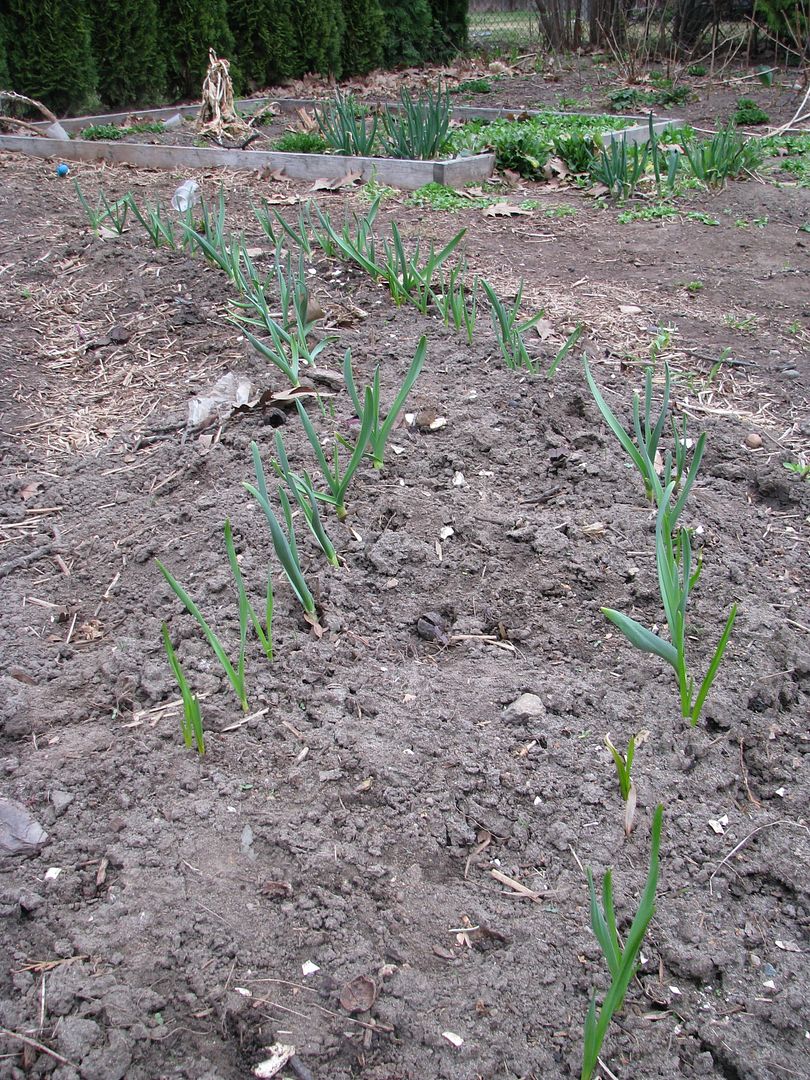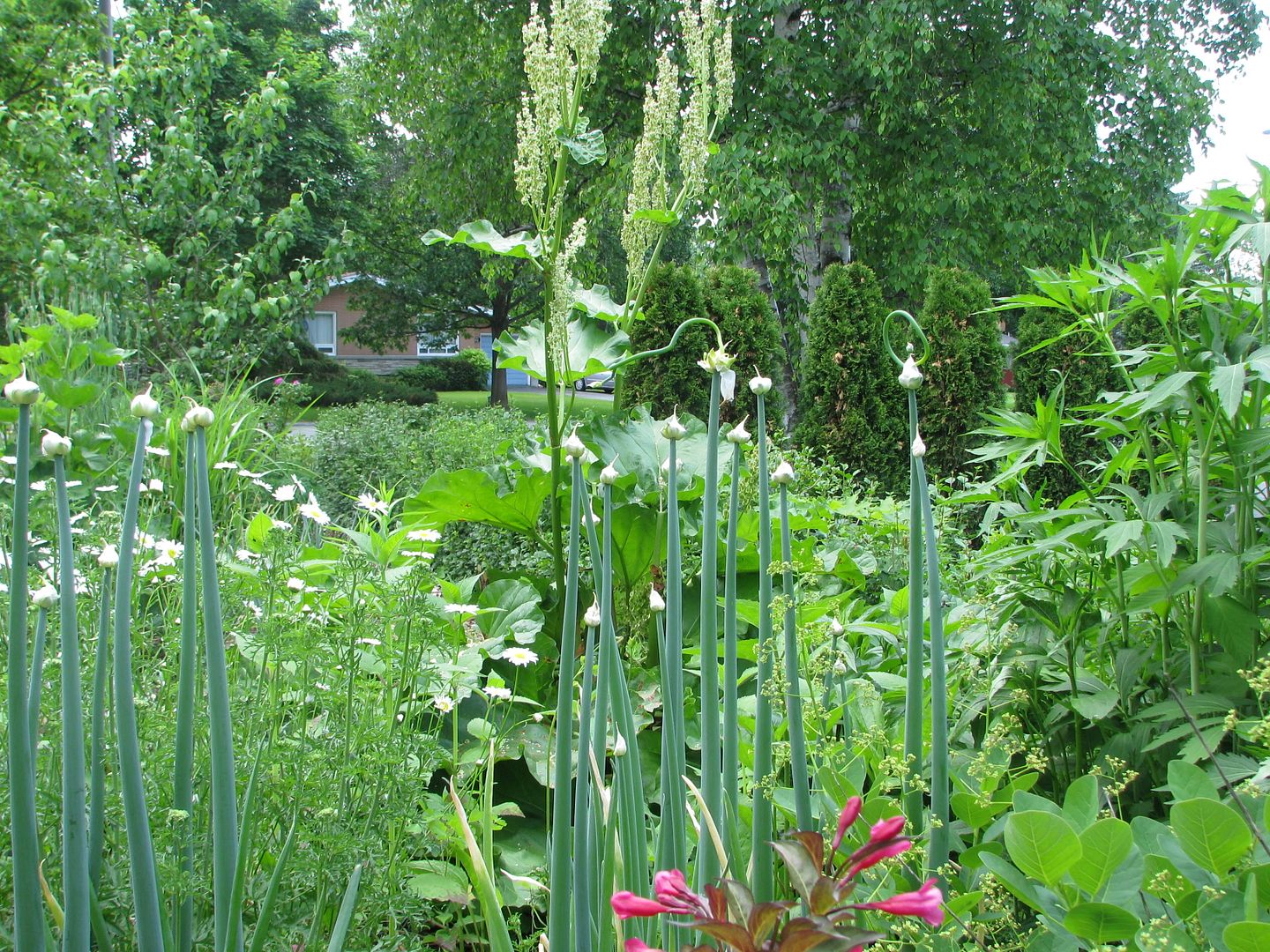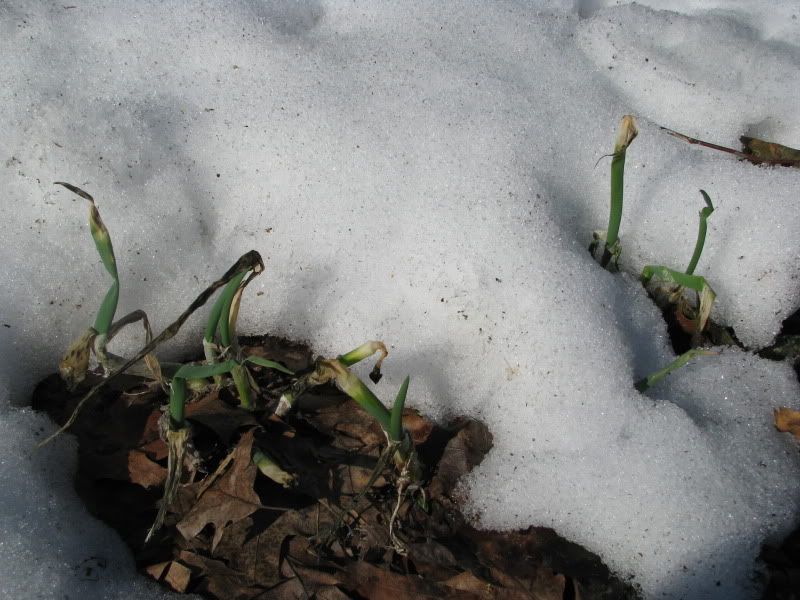
My children and hubby's neatly planted rows of garlic with Bunching Onion in the background.
When I first started gardening, I grew three members of the onion family: garlic, onions and chives. They were all tasty and fun to grow, especially the chives that thrived on neglect among perennial flowers. I like tasty plants that don't need coddling so decided to find more. Here are some of the best:
Garlic Chives - Allium tuberosum: Flat bladed, pleasantly garlic/onion flavoured leaves. There are lots of variety beyond the classic white flowered invader (I'll get to that) that you usually see around. It makes for a nice low growing ground cover or edging if you are willing to pull out the endless seedlings that come up on the other side of the line. Looking up garlic chives and asian cuisine will give you some ideas of how to use including blanching the leaves or flowering stalks for a different flavour.
This perennial is commonly started by seed but if you have a friend with a patch, then they probably have plenty to share. Otherwise, this is a great candidate for in situ winter sowing as it self sows quite reliably in my garden...

Walking onions starting to put out feet.
Walking Onions - Allium cepa proliferum group: Egyptian, topsetting or walking onions are a variety that produces bulbs at the top of its flower stalk which eventually falls over planting these babies in the ground nearby. I really adore the flavour of walking onions all year though some claim that they get a bit too strong or fiborous after the summer heat rises. Mine grow in part shade under a plum tree at the west side of the house. There are a couple varieties of these onions, including tree 'catawaissa' onions that form a second tier of topsets from the original topsets. Mostly used as a green onion, the small above ground bulbs can pickled or otherwise used as onions. You can also use the bulb at the base though.
Plant topsets as soon as they are available in late summer/fall.
Potato Onions - Allium cepa aggregatum group: Also called multiplier onions, you plant a tuber, and watch it form a bunch for the price of one at its base. These onions can be used like regular onions. They are very similar to shallots.
Fall planted like garlic. They are ready to harvest around the same time too. Replant the best bulbs. Many varieties have long storage lives.

Bunching onions ready really early
Bunching Onions - Allium fistulosum: More green onions if you haven't had enough of chives and garlic chives and walking onions. How could you have enough? Another very hardy, perennial onion with a wonderful rich flavour. It is also called Welsh onion, Japanese onion, scallions or bunching onion. The last two name can be confused with Allium cepa varieties that are meant to be harvested young. They will brave the conditions of the cold frame well giving you a long season of harvest.
Perennial that can be started from seed in spring.
***
Next post will explore wild, edible alliums and rarer onion treats.
Great supplier for multiplier and topsetting onions, as well as other fabulous heritage edibles is Heritage Harvest Seed.

3 comments:
I've never heard of potato onions before. Have you eaten them? What do you think that they taste like? Are they like oniony shallots? I'm totally intrigued.
I grow garlic chives - the typical one that self seeds all over and can be a pain. But there is a solution to it. If you harvest the scapes, they are quite tasty and then the plant can't self seed. In China the scapes are considered better than the leaves.
Sylvana: Yes, more or less like oniony shallots! They are worth a try if there is a supplier nearby. A handful of 'cloves' will give you years of onion fun.
Daphne: Good point. Yes, if you harvest all the scapes than they make pretty border flowers. I guess I'm just a sucker for letting plants flower... I even have been known to let mint flower. Why don't I learn? I console myself with the fact that the bees appreciate it. Even if it means LOTS more work for me.
Post a Comment